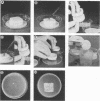Abstract
The feasibility of using pathogen-contaminated pig skin as a model substrate for evaluating skin disinfectants was demonstrated. A test methodology is described that is safe, convenient to use, and adaptable to a variety of hand-washing conditions. The treatment protocol, pathogen contamination conditions, and application technique variables can all be carefully controlled to simulate clinical use conditions. The number of organisms transferred by contact was compared with the total organism count on the pig skin. The quantity of organisms transferred ranged from 10 to 60% of the total organisms, depending on the nature of the contamination conditions. The cumulative results of multiple imprint and stripping measurements were consistent with the concentration of inoculated organisms. Tests with alcohol solutions validated the methodology and clearly showed the dependence of topical antimicrobial activity on both the concentration and structure of the alcohol. Activity increased with increasing alcohol concentration and in the following order: ethanol, isopropanol, and n-propanol. All of the alcohols became less active as the severity of the test conditions was increased, i.e., higher inoculum levels for a longer incubation time before treatment. The contact imprint and stripping methods used to evaluate bacterial growth on the skin clearly showed that the alcohol treatments reduced but did not eliminate the inoculated pathogens. It was found that long lifetimes (several hours) for pathogens on the skin are possible under some environmental conditions. This observation strongly suggests that frequent hand washing is a necessary infection control practice even when opportunities for repeated pathogen contamination have not occurred.
Full text
PDF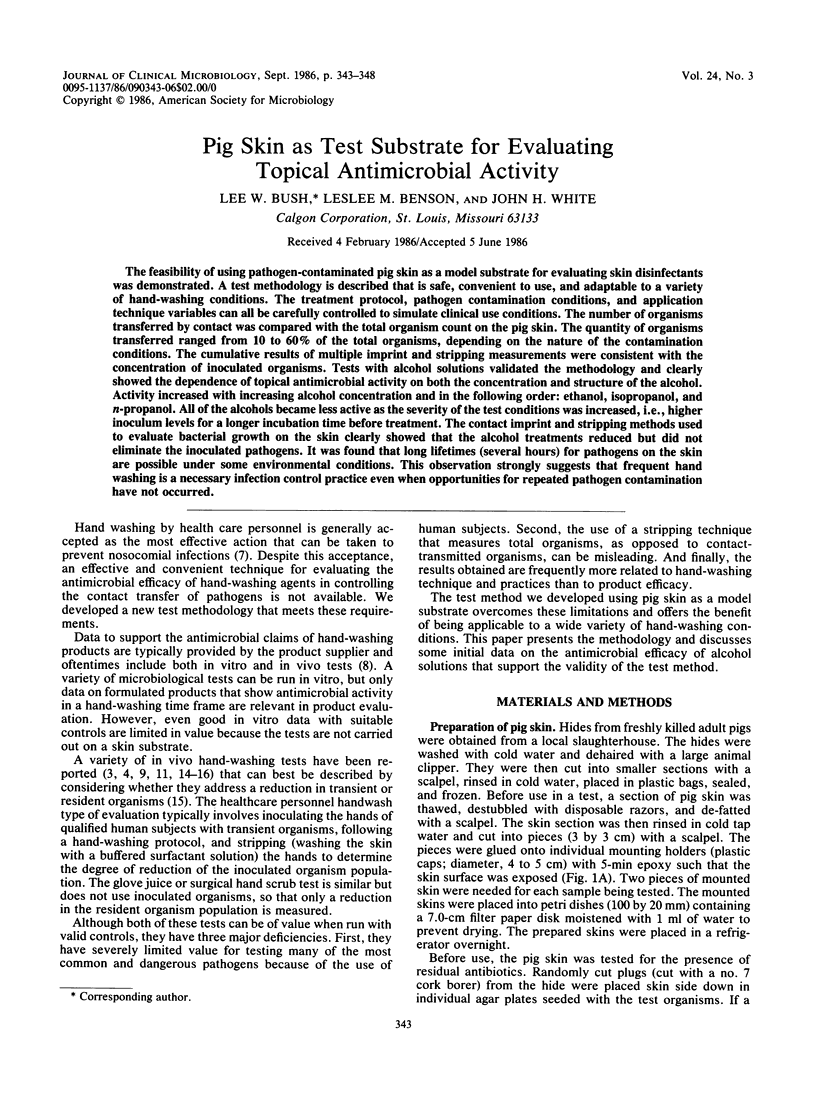
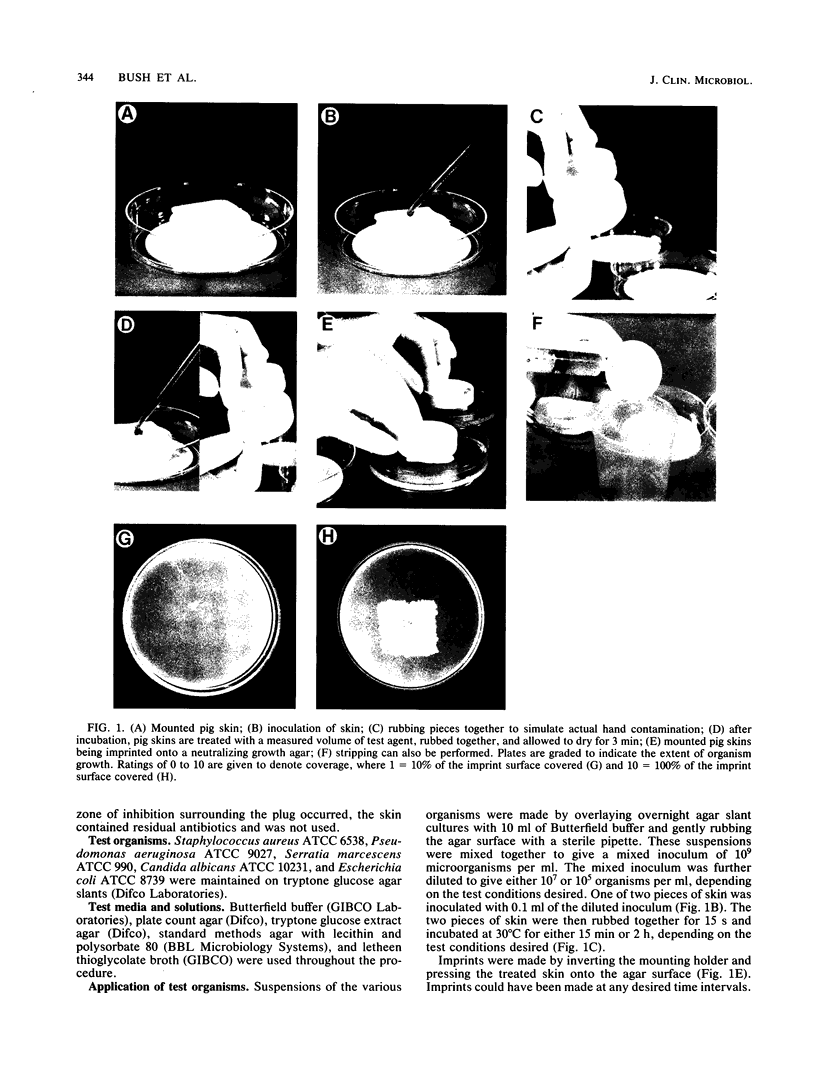
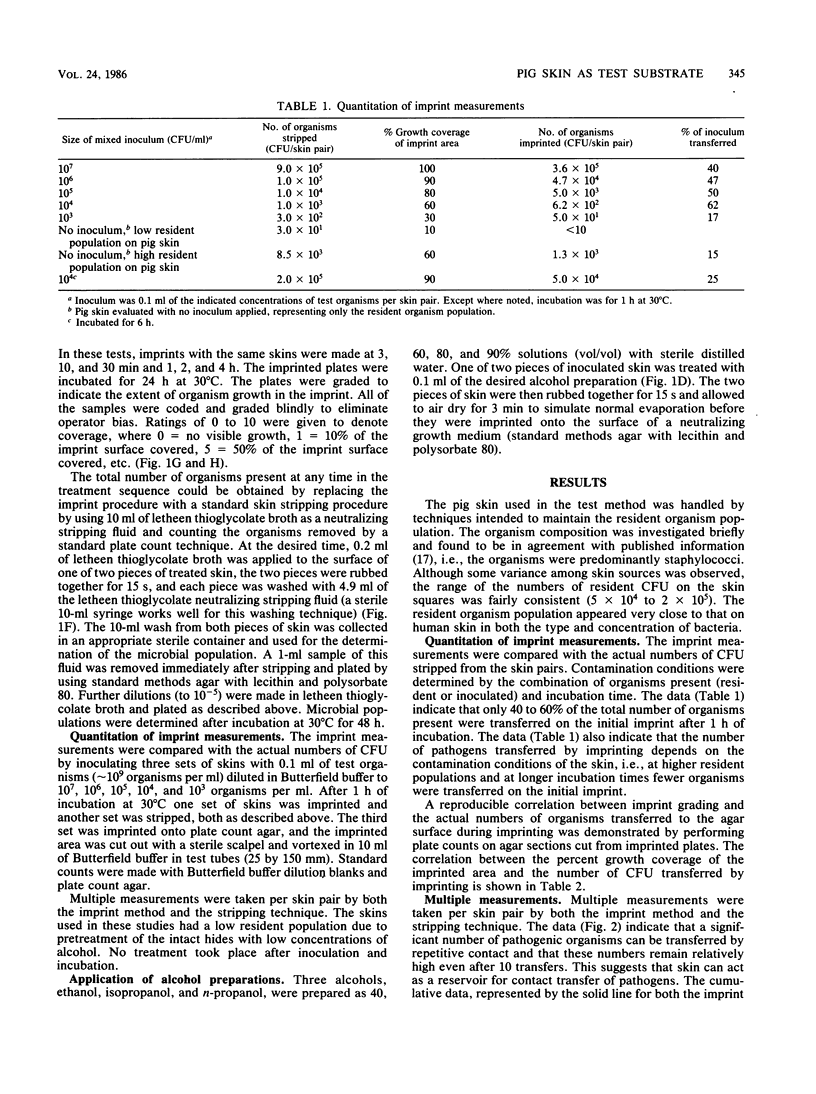
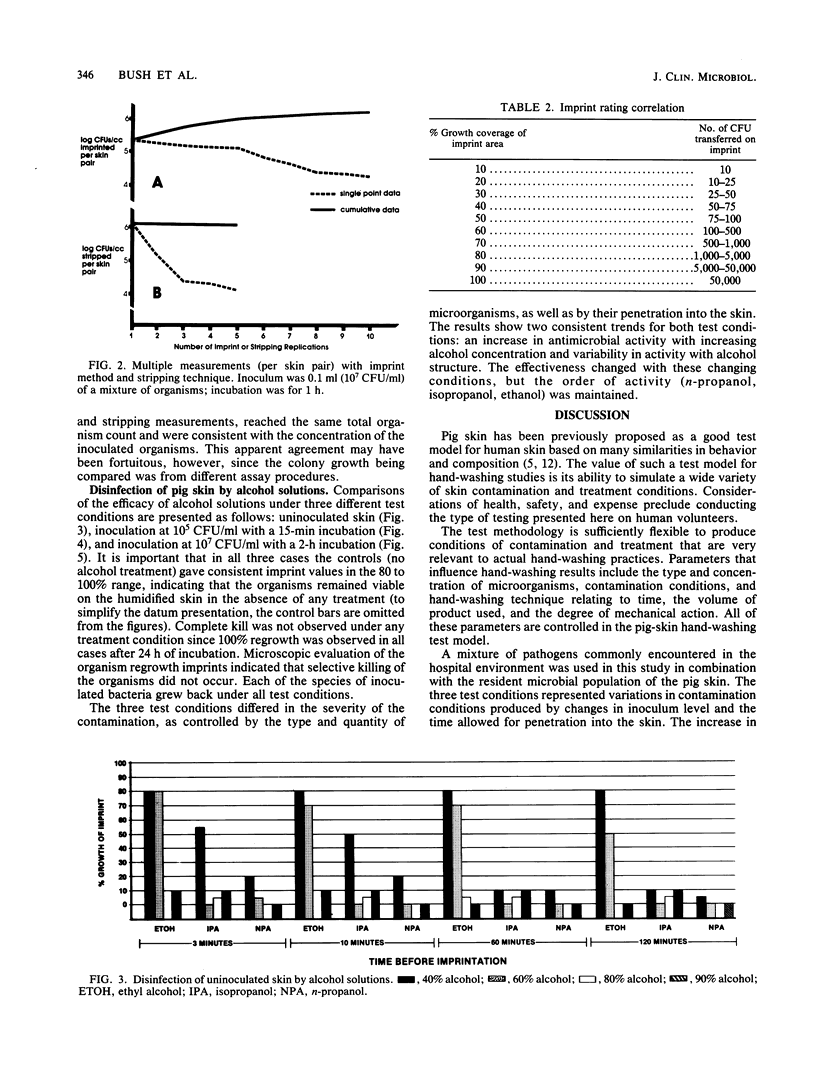
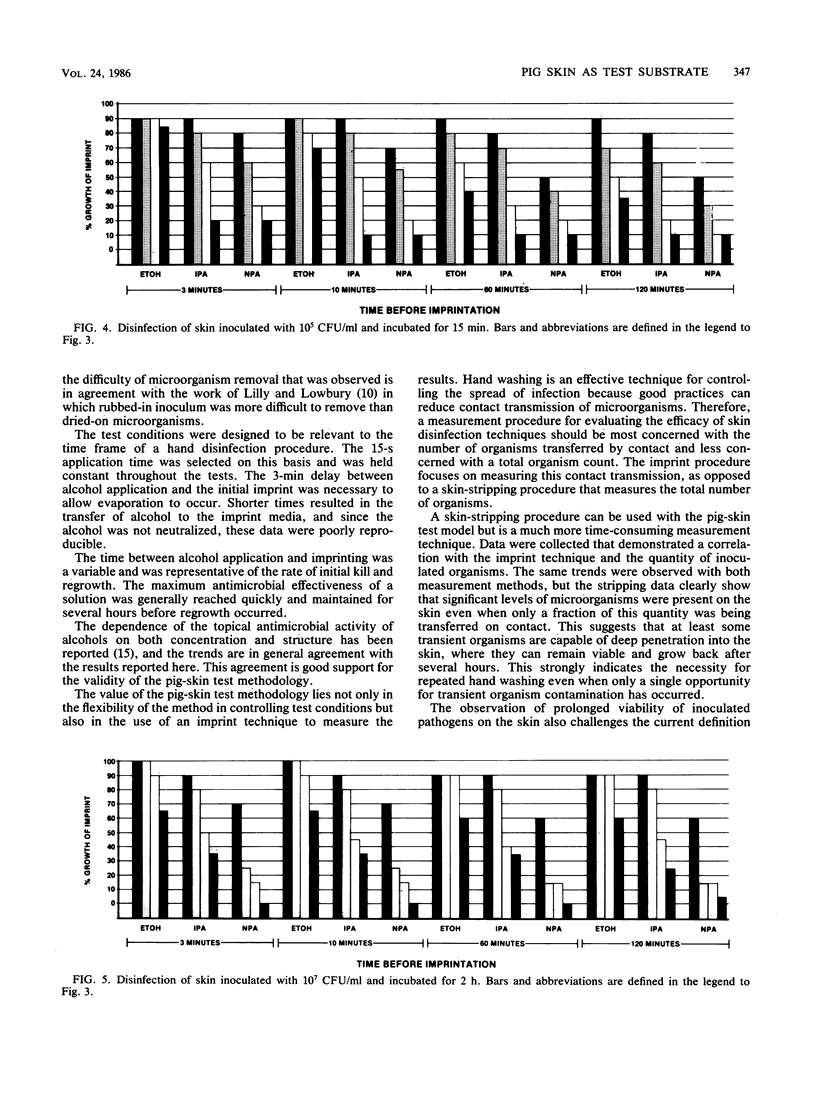
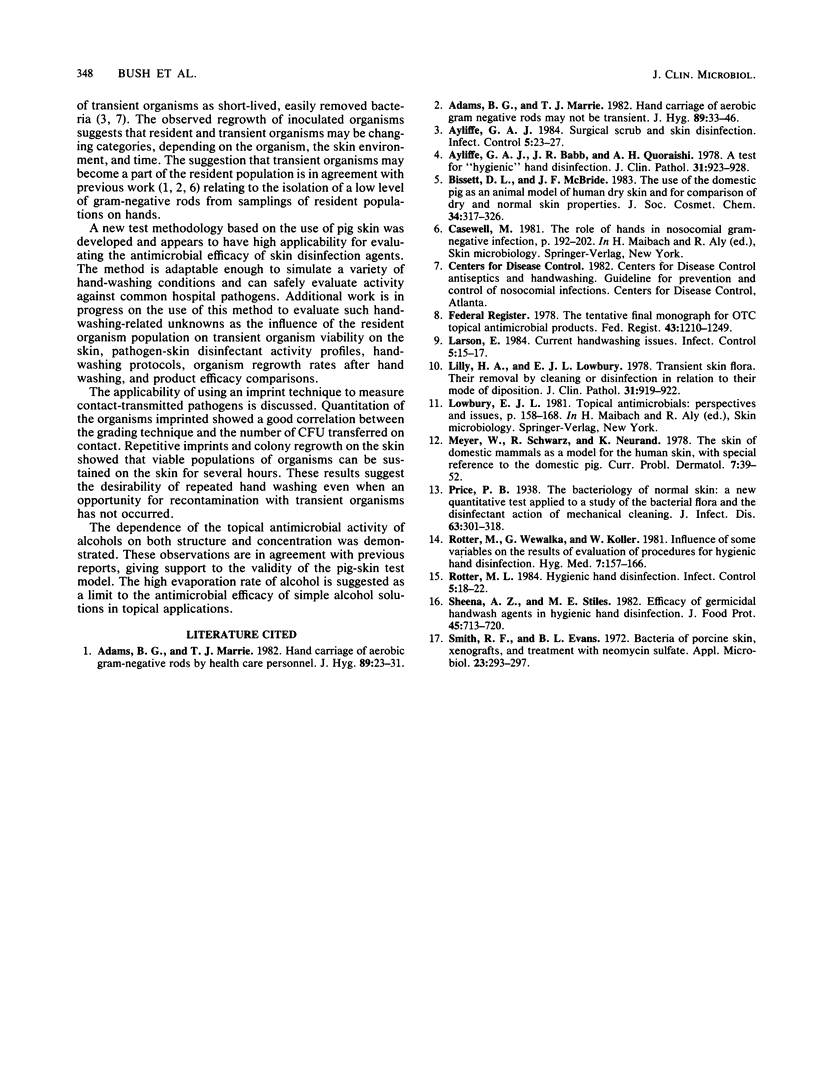
Images in this article
Selected References
These references are in PubMed. This may not be the complete list of references from this article.
- Adams B. G., Marrie T. J. Hand carriage of aerobic Gram-negative rods by health care personnel. J Hyg (Lond) 1982 Aug;89(1):23–31. doi: 10.1017/s0022172400070509. [DOI] [PMC free article] [PubMed] [Google Scholar]
- Adams B. G., Marrie T. J. Hand carriage of aerobic gram-negative rods may not be transient. J Hyg (Lond) 1982 Aug;89(1):33–46. doi: 10.1017/s0022172400070510. [DOI] [PMC free article] [PubMed] [Google Scholar]
- Ayliffe G. A., Babb J. R., Quoraishi A. H. A test for 'hygienic' hand disinfection. J Clin Pathol. 1978 Oct;31(10):923–928. doi: 10.1136/jcp.31.10.923. [DOI] [PMC free article] [PubMed] [Google Scholar]
- Ayliffe G. A. Surgical scrub and skin disinfection. Infect Control. 1984 Jan;5(1):23–27. doi: 10.1017/s0195941700058756. [DOI] [PubMed] [Google Scholar]
- Larson E. Current handwashing issues. Infect Control. 1984 Jan;5(1):15–17. doi: 10.1017/s0195941700058732. [DOI] [PubMed] [Google Scholar]
- Lilly H. A., Lowbury E. J. Transient skin flora: their removal by cleansing or disinfection in relation to their mode of deposition. J Clin Pathol. 1978 Oct;31(10):919–922. doi: 10.1136/jcp.31.10.919. [DOI] [PMC free article] [PubMed] [Google Scholar]
- Meyer W., Schwarz R., Neurand K. The skin of domestic mammals as a model for the human skin, with special reference to the domestic pig. Curr Probl Dermatol. 1978;7:39–52. doi: 10.1159/000401274. [DOI] [PubMed] [Google Scholar]
- Rotter M. L. Hygienic hand disinfection. Infect Control. 1984 Jan;5(1):18–22. doi: 10.1017/s0195941700058744. [DOI] [PubMed] [Google Scholar]
- Smith R. F., Evans B. L. Bacteria of porcine skin, xenografts, and treatment with neomycin sulfate. Appl Microbiol. 1972 Feb;23(2):293–297. doi: 10.1128/am.23.2.293-297.1972. [DOI] [PMC free article] [PubMed] [Google Scholar]



